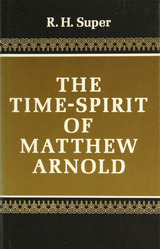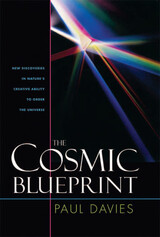
In this critically acclaimed book, first published in 1988 and now reprinted in paperback, scientist and author Paul Davies explains how recent scientific advances are transforming our understanding of the emergence of complexity and organization in the universe.
Melding a variety of ideas and disciplines from biology, fundamental physics, computer science, mathematics, genetics, and neurology, Davies presents his provocative theory on the source of the universe's creative potency. He explores the new paradigm (replacing the centuries-old Newtonian view of the universe) that recognizes the collective and holistic properties of physical systems and the power of self-organization. He casts the laws in physics in the role of a "blueprint," embodying a grand cosmic scheme that progressively unfolds as the universe develops.
Challenging the viewpoint that the physical universe is a meaningless collection of particles, he finds overwhelming evidence for an underlying purpose: "Science may explain all the processes whereby the universe evolves its own destiny, but that still leaves room for there to be a meaning behind existence."
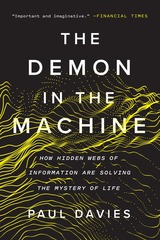
A Financial Times, Sunday Times, and Telegraph Best Science Book of the Year
What is life? For generations, scientists have struggled to make sense of this fundamental question, for life really does look like magic: even a humble bacterium accomplishes things so dazzling that no human engineer can match it. Huge advances in molecular biology over the past few decades have served only to deepen the mystery.
In this penetrating and wide-ranging book, world-renowned physicist and science communicator Paul Davies searches for answers in a field so new and fast-moving that it lacks a name; it is a domain where biology, computing, logic, chemistry, quantum physics, and nanotechnology intersect. At the heart of these diverse fields, Davies explains, is the concept of information: a quantity which has the power to unify biology with physics, transform technology and medicine, and force us to fundamentally reconsider what it means to be alive—even illuminating the age-old question of whether we are alone in the universe.
From life’s murky origins to the microscopic engines that run the cells of our bodies, The Demon in the Machine journeys across an astounding landscape of cutting-edge science. Weaving together cancer and consciousness, two-headed worms and bird navigation, Davies reveals how biological organisms garner and process information to conjure order out of chaos, opening a window onto the secret of life itself.

In this exhilarating and mind-bending book, renowned scientist and author Paul Davies offers readers a glimpse of how quantum physics has led to a quantum technology revolution. Quantum 2.0 reveals how today’s brightest minds are harnessing exotic states of matter that have no counterpart in everyday life. Specifically, all eyes are on entanglement, called “spooky” by Einstein, that links the activities of separated particles even across vast distances.
By manipulating these weird properties of atoms, electrons, and photons, scientists are driving the burgeoning field of “quantum information science,” featuring new tools such as quantum computers, quantum cryptography, and the quantum internet. In turn, their efforts have attracted billions of dollars in investments and triggered a frantic quantum arms race between nations. At the same time, theorists are taking a closer look at quantum systems themselves, which possess properties that defy intuition and shred everyday notions of reality. Davies explains how researchers, including himself, are wrestling with quantum theory to make sense of this realm, where ghostly quantum particles produce tiny forces in nanotechnology, cause black holes to evaporate, and may even contribute to the universe’s accelerating expansion. A trusted guide, Davies takes readers from the basic concepts to today’s cutting-edge, inviting us all to see the wonderland of quantum physics and glimpse its stunning implications.

In this exhilarating and mind-bending book, renowned scientist and author Paul Davies offers readers a glimpse of how quantum physics has led to a quantum technology revolution. Quantum 2.0 reveals how today’s brightest minds are harnessing exotic states of matter that have no counterpart in everyday life. Specifically, all eyes are on entanglement, called “spooky” by Einstein, that links the activities of separated particles even across vast distances.
By manipulating these weird properties of atoms, electrons, and photons, scientists are driving the burgeoning field of “quantum information science,” featuring new tools such as quantum computers, quantum cryptography, and the quantum internet. In turn, their efforts have attracted billions of dollars in investments and triggered a frantic quantum arms race between nations. At the same time, theorists are taking a closer look at quantum systems themselves, which possess properties that defy intuition and shred everyday notions of reality. Davies explains how researchers, including himself, are wrestling with quantum theory to make sense of this realm, where ghostly quantum particles produce tiny forces in nanotechnology, cause black holes to evaporate, and may even contribute to the universe’s accelerating expansion. A trusted guide, Davies takes readers from the basic concepts to today’s cutting-edge, inviting us all to see the wonderland of quantum physics and glimpse its stunning implications.
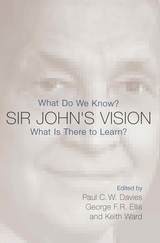
This volume is a result of that meeting—a collection of thirteen essays written by experts in fields that most fascinated Sir John. The contributors assess the Foundation’s fidelity to its founder’s intent, chart promising avenues for future grantmaking, and champion Sir John’s contrarian mission of unlocking life’s deepest mysteries.
The members of the John Templeton Foundation are the custodians of Sir John’s vision—bold in its aspiration; humble in its approach—charged with using the tools of science to advance the frontiers of the spirit. May the essays collected here serve as inspiration as we carry that vision forward.
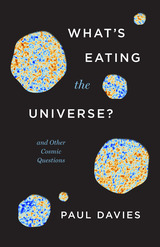
In the constellation of Eridanus, there lurks a cosmic mystery: It’s as if something has taken a huge bite out of the universe. But what is the culprit? The hole in the universe is just one of many puzzles keeping cosmologists busy. Supermassive black holes, bubbles of nothingness gobbling up space, monster universes swallowing others—these and many other bizarre ideas are being pursued by scientists. Due to breathtaking progress in astronomy, the history of our universe is now better understood than the history of our own planet. But these advances have uncovered some startling riddles. In this electrifying new book, renowned cosmologist and author Paul Davies lucidly explains what we know about the cosmos and its enigmas, exploring the tantalizing—and sometimes terrifying—possibilities that lie before us.
As Davies guides us through the audacious research offering mind-bending solutions to these and other mysteries, he leads us up to the greatest outstanding conundrum of all: Why does the universe even exist in the first place? And how did a system of mindless, purposeless particles manage to bring forth conscious, thinking beings? Filled with wit and wonder, What’s Eating the Universe? is a dazzling tour of cosmic questions, sure to entertain, enchant, and inspire us all.
READERS
Browse our collection.
PUBLISHERS
See BiblioVault's publisher services.
STUDENT SERVICES
Files for college accessibility offices.
UChicago Accessibility Resources
home | accessibility | search | about | contact us
BiblioVault ® 2001 - 2025
The University of Chicago Press



